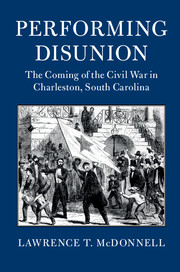CONTRADICTIONS: STAND NOBLY TOGETHER
Published online by Cambridge University Press: 08 June 2018
Summary
A lot of grassroots history is like the trace of the ancient plough. It might seem gone for good with the men who ploughed the field many centuries ago. But every aerial- photographer knows that, in a certain light, and seen at a certain angle, the shadows of long- forgotten ridge and furrow can still be seen.
Nevertheless, mere ingenuity doesn't take us far enough. What we need, both to make sense of what the inarticulate thought, and to verify or falsify our hypotheses about it, is a coherent picture … What we must normally do is to put together a wide variety of often fragmentary information: and to do that we must, if you'll excuse the phrase, construct the jig- saw puzzle ourselves, i.e., work out how such information ought to fit together.
Eric J. Hobsbawm, “History from Below – Some Reflections”
From the ancient Greeks to the Founding Fathers, politics meant something defective and distasteful, the undermining of social harmony by civil strife. “Any city, however small, is in fact divided into two,” Plato held: “one the city of the poor; the other of the rich,” perpetually “at war with one another.” Class divisions were fundamental, but petty conflicts of clique and personality multiplied discord. In each case, it was division within their own ranks – “contradictions among the people,” Mao delicately called them – that men feared most. So it was in Charleston on the eve of disunion. There men spoke of conservative principles and common purpose. Against the Black Republican menace, James D. B. DeBow declared, “[t] he entire people, with one voice, rich and poor, merchant, mechanic and laborer, stand nobly together.” 2 But that was wishful thinking. Firmness and loyalty were not easily conjured, especially in a city so flawed and fractured. For DeBow as for the Great Helmsman, the truth or error of his analysis rested entirely on how one drew the line between “the people” and their foes. Not nearly every enemy stood beyond Charleston's borders. The “tug of war” came first from the contest of internal factions. 3 Men strove to displace conflict as recreation but split over questions of manhood itself. And beyond all loomed deeper, more intractable divisions of economy and social class, summed up, unsurprisingly, in the hats men wore. The Vigilant Rifles arose from an internecine struggle of play, theater, commerce, and subversion.
- Type
- Chapter
- Information
- Performing DisunionThe Coming of the Civil War in Charleston, South Carolina, pp. 137 - 138Publisher: Cambridge University PressPrint publication year: 2018



